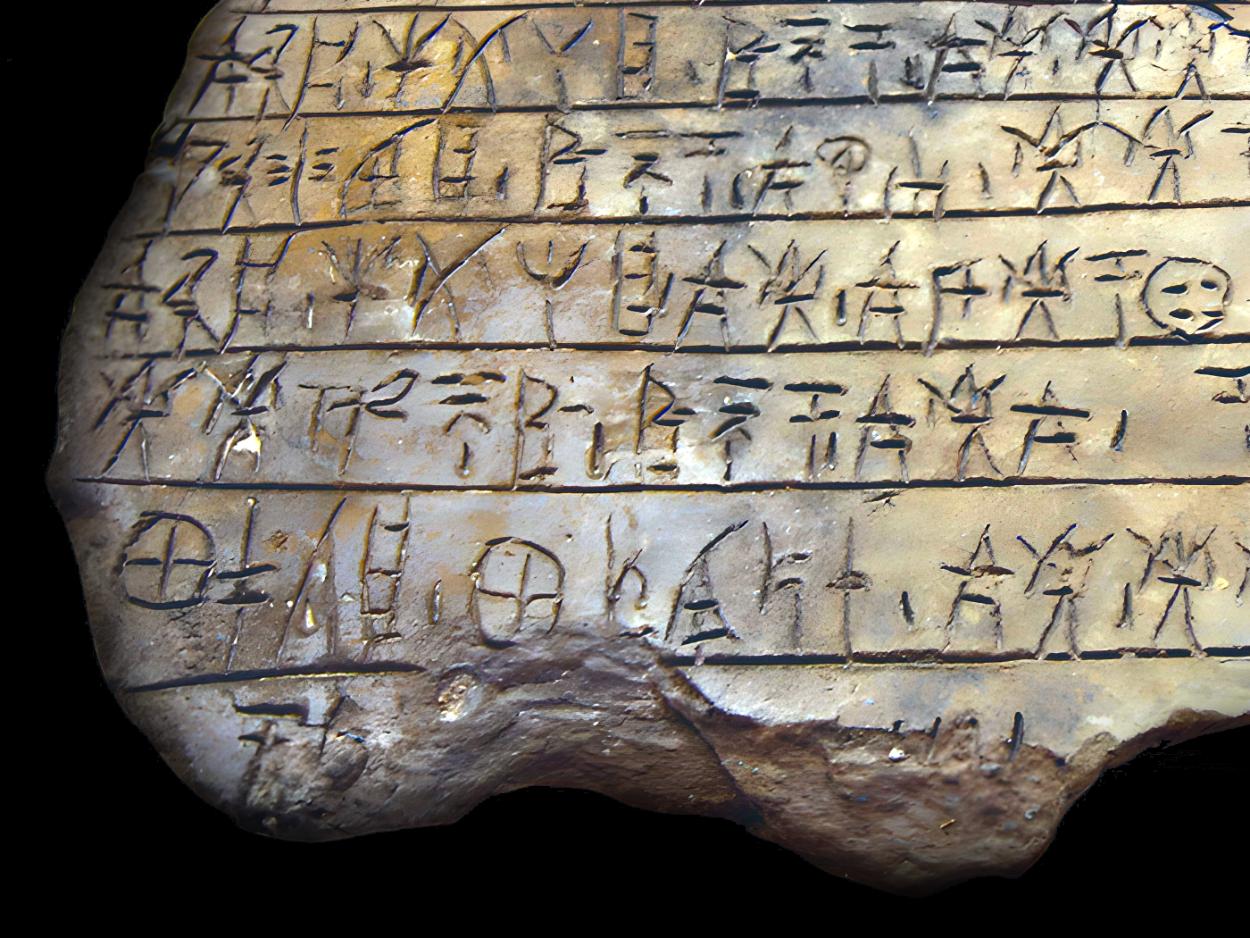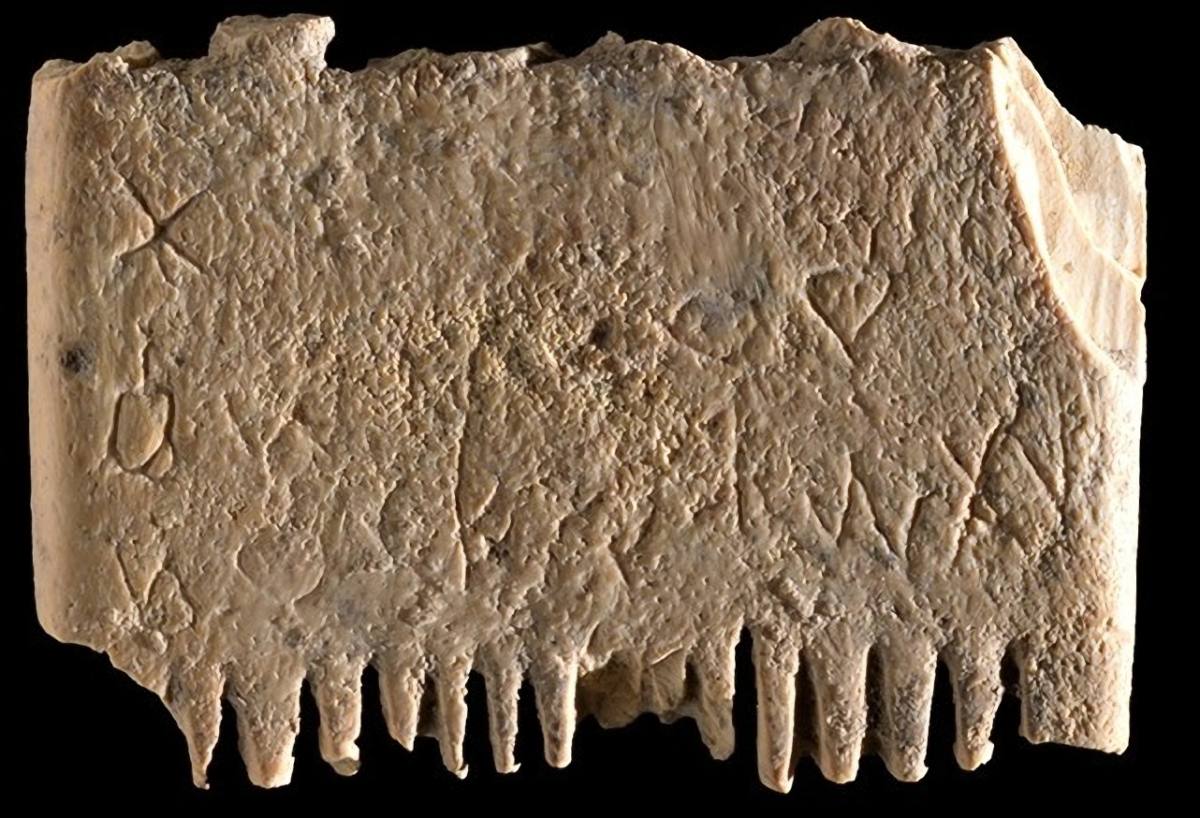The Linear script A is the earliest writing system in Europe, with its symbols appearing on clay tablets, jewelry, and sacrificial offerings as early as 4000 years ago. But what these signs meant and what language the Minoans used is still a mystery. There is a plethora of speculation, but thus far no one has been able to decipher it.
As early as 2,500 BC, the Minoans had already constructed the first palace complexes on Crete, and their fleet controlled the whole eastern Mediterranean. During this historical period, the Minoans developed not one but two distinct writing systems: the hieroglyphic script and the more abstract Linear A script. Neither writing system, however, has been cracked, and even the Minoan language remains a mystery.
Findings in the domain of Minos
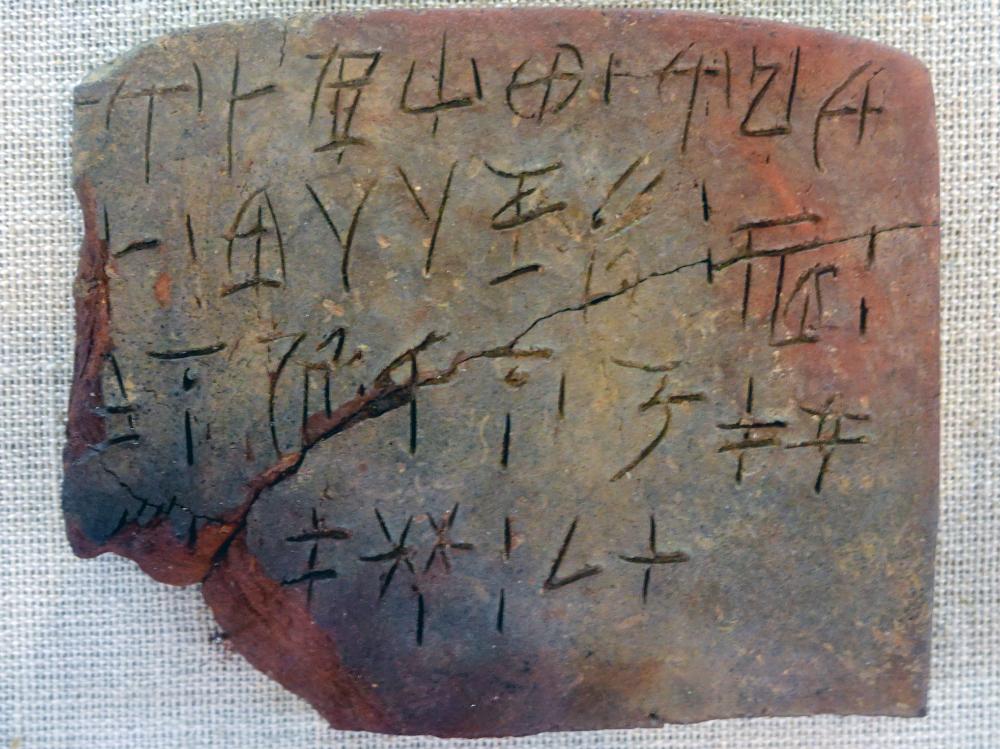
There is a lot of mystery and mythology surrounding the Minoans. Starting approximately 2,500 BC, they controlled marine commerce across the eastern Mediterranean for centuries, developed one-of-a-kind pieces of art, and constructed beautiful palaces like Knossos and Phaistos on Crete. No one knows for sure where they came from or what language they spoke. The unexpected collapse of this highly developed Bronze Age culture has also baffled researchers.
The Minoans of the Bronze Age invented not one but two distinct writing systems at once: the Cretan hieroglyphs and the Linear A script. This may be the greatest secret of this technologically accomplished society. As far as we know, these are the earliest writing systems in Europe. To this day, however, none of the Minoan scripts has been deciphered. There have been generations of linguists, archaeologists, and historians who have attempted, and failed, to decipher Minoan writing and language.
Confounding pictograms
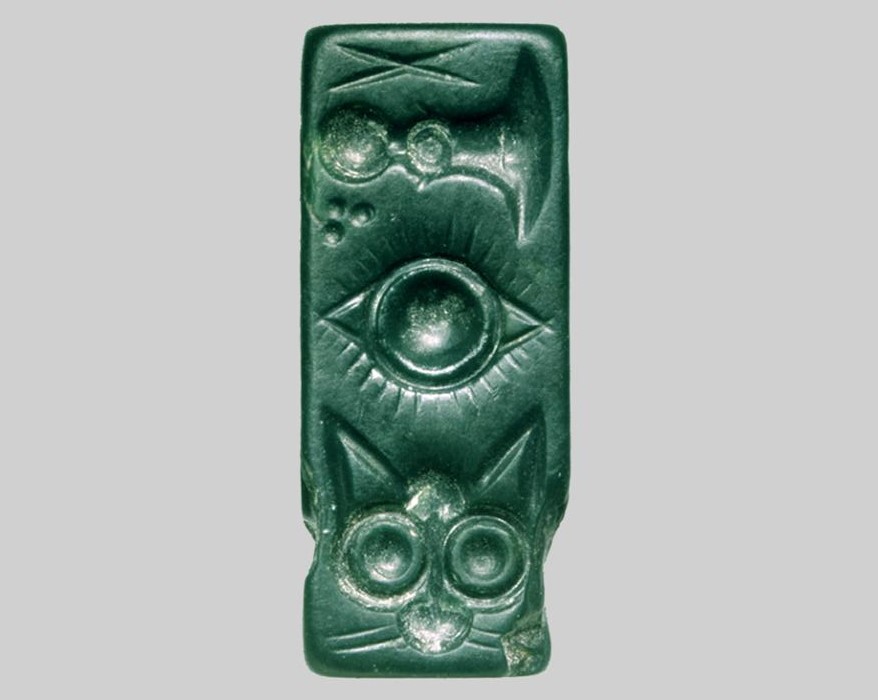
British archaeologist Arthur Evans was one of the first and most well-known to study Minoan writings. As early as 1894, he set out for the island of Crete in quest of evidence of a lost Minoan civilization. He kept finding broken pots and seal stones covered in cryptic symbols. Modern-day islanders routinely perforated these old seals and wore them as amulets.
Evans later unearthed additional examples of the mysterious hieroglyphs as he progressively explored the palace of Knossos, beginning in 1900. The earliest of these pictographic signs were penned as far back as 2100 BC, according to dating efforts. Like Egyptian pictographic writing, they depict stylized humanoid figures, animal symbols, or hybrids of the two. Evans made a comprehensive list of the artifacts on which Minoan hieroglyphs had been discovered and the many permutations in which they had been found in 1909.
What do hieroglyphics mean?
By compiling this list, the archaeologist intended to get a better understanding of the hieroglyphs. After some preliminary comparisons, he guessed that some repeating pairs of letters were official titles or the insignia for Minoan dynasties. One of the most common permutations is associated with the male head on a seal, lending more credence to the personal significance of the word. Possibly a portrait of a Minoan ruler.
However, archaeologists have only conjectured about what the Minoan hieroglyphs meant. The only thing that can be said with any certainty is that most of the 137 Minoan hieroglyphs seem to stand for particular syllables, and 10 signs are regarded as word symbols. The remaining 23 symbols likely indicate some kind of numerical value. Most hieroglyphic writings are merely a single or two characters long, and are thus difficult to understand. These inscriptions are generally found on seals or tiny clay bars. This makes it difficult to infer their meaning from the surrounding material. Unlike with Egyptian hieroglyphs, there is no Rosetta stone to help decipher these symbols.
No explanation for its beginnings

Evans speculates that the Minoans created their own hieroglyphs but borrowed them from the Egyptians, noting that the Egyptian hieroglyphic system may have had a certain formative influence on the Minoans. It’s possible that one or two Egyptian signs were adopted. However, more evidence for or against this connection is still needed.
There are also parallels with the picture writing used by the Hittites and Cypriots in the Bronze Age. Therefore, some scholars believe that all hieroglyphs of these early societies have a common ancestor: a form of primordial pictographic writing of the Middle East, of which no traces have been preserved. This is just conjecture at this point.
The discovery of the Linear A script
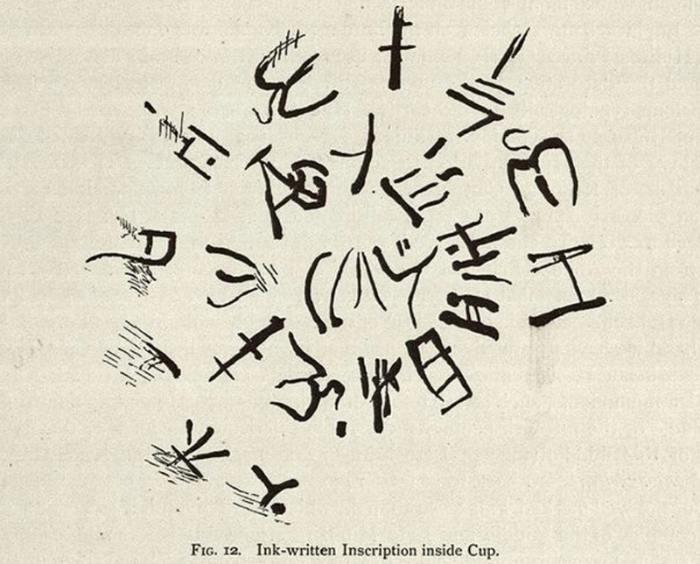
Crete’s Bronze Age inhabitants, the Minoans, created not just the mysterious hieroglyphic script but also the Linear A script, which is even more abstract. This is the earliest known European script and was used in tandem with hieroglyphs. From 1900 BCE on, its characters could be seen all across the region under the sway of the Minoan civilization.
Linear A’s letters, which are characterized by strokes and curves, are more akin to the early versions of the alphabet or the cuneiform scripts of Mesopotamia than they are to the pictographic Minoan hieroglyphs. The Minoan scribes carved their writing into the writing surface, as opposed to the more common practice of impressing lettering into damp clay with the edge of a stick. These linear glyphs can be discovered on both clay and stone, as noted by British archaeologist Arthur Evans in 1909.
Small clay tablets, which could be used for accountancy, have been discovered bearing Linear A inscriptions, but the writing has also been discovered in cave sanctuaries and the grand palaces of Phaistos and Knossos. There were several seals with hieroglyphics in one of the chambers at Knossos, but one specific specimen stood out to Evans: “Between them lay two bowls, which were inscribed in ink with these linear signs all around on their insides,” he writes. Before the clay pots were burned, the characters were reportedly inscribed using a reed pen.
Visual representations of syllables and words

To date, archeologists have discovered around 1,362 artifacts that use the Linear A script. Linear A inscriptions are mostly associated with Crete, but have also been found on the Greek mainland, in the Aegean, the Levant, and on the western coast of Turkey. Certain regional characteristics may be reflected in these discoveries. Evans argued that there was strong reason to think that there were provincial or colonial styles of writing at the time, but that they had not been discovered. That’s because local scribes may have favored some indicators of primitive ancestors over others, thereby fostering their survival.
About 70 of the recorded characters are syllabic, while the other 100 or so are either entire words or connecting devices. At least, that’s what experts in linguistics have deduced based on character count and distribution. The following are examples of characters often cited as essential to understanding Linear A: These symbols are well attested from all Linear A discoveries, and they can be retrieved from a wide range of locations in Crete and the Aegean islands.
The number of characters who qualify as “core characters” is unknown at this time, says University of Cambridge archaeologist Ester Salgarella. According to her estimation, there are somewhere between 70 and 80 of these rudimentary signs. Additionally, there are indicators that seem to be unique to a certain location.
Fractional and decimal notation

Also, the Minoan script has clusters of strokes and circles that are taken to be number symbols. Archaeologists believe the Minoans utilized a decimal system for mathematics based on the signs’ placement and meaning. It seems like dots or horizontal dashes represent tens, circles represent hundreds, and circles surrounded by dashes represent thousands.
In 2020, an Italian research group headed by Michele Corazza of Bologna University found evidence that the Minoans employed decimal fractions in their calculations and measurement systems. Linear A seems to include 17 characters that stand for fractions. The fractions use basic symbols that are either triangular or semicircular, and one or more dots to represent a fraction of a whole. But the underlying system of the fraction symbols remained unknown for a long time. The underlying logic of this notation could only be discerned with the use of computational analysis.
Although we know the basics of the numerical system in Linear A, most of the rest of the script is still a mystery. Is there a special reason why deciphering them is so hard?
Mystery surrounding the Minoans’ language and ancestry
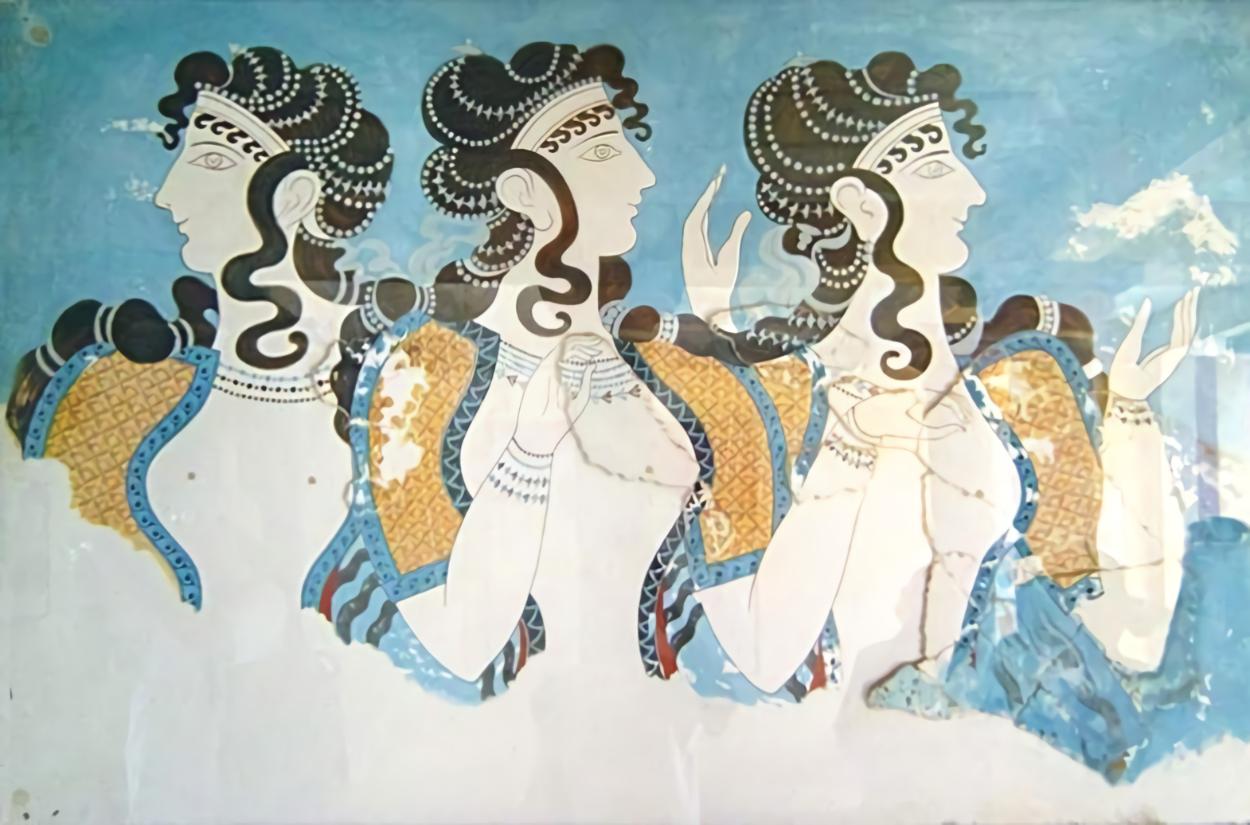
Despite scientists’ best efforts over the course of a century, they have been unable to decipher the Minoan Linear A script, maintaining the document’s aura of mystery.
The fact that we still don’t know what language the Minoans spoke or which of the major language groups it belonged to is a key contributing factor. We don’t even know what this first sophisticated European society called itself. In 1900, British archaeologist Arthur Evans gave them the name “Minoans,” concluding that the society shown in the palace paintings, which included bull images, must have been that of the legendary Greek king Minos.
From where did the Minoans first arrive in Crete?
If we understood the language underlying Linear A, it may also provide us a clue to the beginnings of this civilization. Can anybody shed light on the Cretan colonizers’ identities? From where did they first appear? We can only speculate that new inhabitants arrived on the island some 5,000 years ago, which would explain the abrupt uptick in the population at the time. The first significant structures, including palaces, soon followed. Crete’s formerly simple peasant culture developed into a sophisticated and innovative society.
Historians like Arthur Evans and others have speculated that people fleeing Egypt or one of the other early great civilizations in the Middle East were responsible for this sudden burst of progress. According to Jeffery Hughey of California’s Hartnell College, he based this on startling parallels between Minoan and Egyptian art. The circular graves of the early Minoans were strikingly similar to the burial constructions popular in the Middle East at the period, and the two cultures shared a common written language in the form of hieroglyphics.
However, DNA studies conducted in 2013 debunked this theory by finding no resemblance between the genetic makeup of Minoan-era corpses and that of modern-day North Africans or Levantines. Nonetheless, no other Bronze Age group could be confidently attributed to the DNA samples. The origins of the Minoans are therefore still debated.
Foreign language
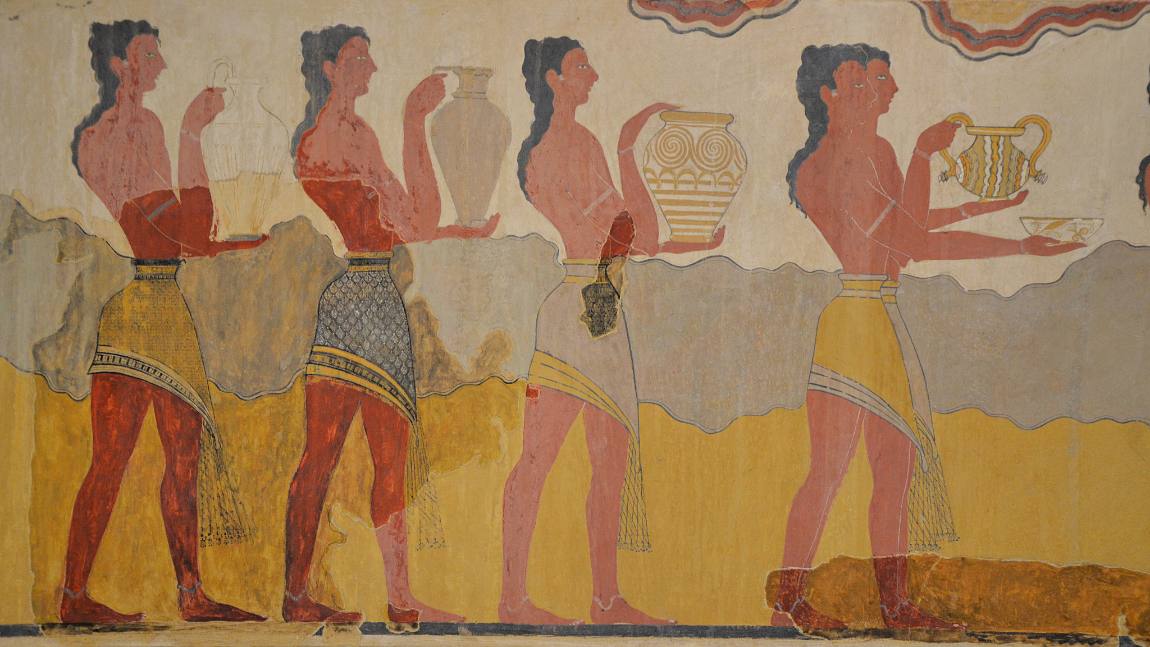
Here means that the Minoan language is still a mystery. We are unable to read the Linear A script without language. However, it is very difficult to recreate a language if you are unable to understand the writing or are unfamiliar with the cultural foundations of the people who spoke it. Archaeologist Brent Davis from the University of Melbourne likens the difficulty to walking a tightrope with one end dangling in the air. It’s really challenging, and every move you make will test your trust.
It is still a matter of conjecture among linguists as to which family of languages Minoan originally belonged to. While some argue that it is a Semitic language, others believe it to be an outdated variety of Phoenician or Etruscan. The connection to the languages of Asia Minor is also examined.
However, other archaeologists, like Davis, argue that Minoan is best understood as an isolated language, comparable to modern-day Basque, which does not belong to any of the main linguistic groups. This theory proposes that the Minoan language originated with Stone Age Cretans and flourished on the island mainly apart from the languages of the peoples to its north, south, east, and west. It is presumed that the Minoans borrowed terms from other civilizations throughout time, but their language as a whole retained its distinctiveness.
Minoan frescoes are reminiscent of Egyptian art.
However, this is only one of many potential explanations, and solid proof is still lacking. Only the fact that the Minoan language is not an early variant of Greek can be said with any certainty at this point. Davis thinks this adds a layer of difficulty, but not impossibility, to deciphering the situation.
The deciphering of the Linear script B
Comparable and yet very different. 100 years ago, when archaeologist Arthur Evans was compiling a list of the letters and symbols found on Crete, he made an interesting observation regarding the Linear scripts: Especially at the palace of Knossos, it seems that a second system of linear characters existed alongside the generally short strings of Linear A characters.
Evans noted in 1909 that most of the clay tablets found in the chambers and storage areas of the structures fall into this category. They were written in a style that was prevalent during the period of this culture’s tragic demise, around the 15th or 14th century BC. It looks to be a mixture of syllabic and word characters, like Linear A. In addition, there are certain correspondences between the characters and Linear A.
Mycenaean instead of Minoan
Yet there are also a great deal of contrasting characters, and the order of these seems to be radically altered. The characters of Linear B are easier to learn and memorize, and their layout and design seem more “European,” to use Evans’ term. Therefore, at first look, it seems that Linear B is really an improved version of Linear A. Although both Linear scripts were clearly utilized in Minoan Crete, the archaeologist feels that there is more to Linear B than a direct successor of Linear A.
This is borne out by the fact that Linear B is found not just on the island of Crete but also in the major urban hubs of the Mycenaean civilization that formed on the Greek mainland to succeed the Minoan period in the eastern Mediterranean. In Mycenae, Sparta, and the Mycenaean royal capital of Tiryns, archaeologists have uncovered several clay tablets and other items containing Linear B inscriptions. There are inscriptions here that are older than the first Linear B texts discovered on Crete.
Kober’s triplets

However, at first, it is still not apparent whose language these signs belong to or what they imply, even with Linear B. This didn’t alter, though, until American historian Alice Kober started looking into Linear B in the 1930s. This ancient calligraphy captivated her. She was so intrigued by the mystery surrounding this ancient writing that she spent her free time painstakingly cataloging the character sequences on index cards. As part of this process, she arrived at a method for tracking down where and when certain symbols emerge.
In the process, Kober makes a significant discovery: certain signs create groups in which the first two symbols stay the same, but the third is modified or swapped. Kober, drawing on her previous linguistic experience, surmises that they are words with ends that have been grammatically inflected to indicate whether the reference word is feminine, masculine, or in a plural form. These “Kober triplets” demonstrate that inflectional grammar was present in the language used to create Linear B.
Now the question is, which one? The vast family of Indo-European languages, as well as several Semitic languages, belong to this category of inflectional languages. She passed away at the young age of 43, before Kober could resolve the linguistic issue. She has left behind almost 40 notebooks and a library of 200,000 cards with Linear B strings.
Place names for deciphering
The key advance in understanding Linear B is predicated on Kober’s research and her legacy. Michael Ventris, a young British architect, manages to do this. The mystery of the Minoan language and writing has attracted the linguistically bright young man ever since he was 14 and attended a lecture by Arthus Evans. In his leisure time as a young man, he starts to research Alice Kober’s character lists.
Ventris draws parallels between the Linear B strings discovered in Crete and those discovered on the Greek mainland. He finds that certain sign combinations are exclusively found on Cretan tablets, while others are only seen elsewhere. It seems likely to Ventris that they are geographical names, but he isn’t sure which ones.
With much deliberation and help from figures in nearby Cyprus, Ventris was able to determine the order of events. He recognized Ko-no-so as the combination for Knossos and Ko-no-si-ja and Ko-no-si-jo as the inflected variations for male and female residents. For other place names, Ventris has the same level of success. Now that he understood the syllabic sounds of the basic Linear B letters, he could begin to piece together the meaning of longer stringings of characters. He could read the signs for specific commodities like wine, olives, and grain, and was working his way up to whole phrases.
Written in Greek
“Although it contradicts all I have claimed in the past, I am now nearly entirely persuaded that the Linear B tablets are written in Greek,” says Ventris to a colleague after discovering that the transcribed Linear B portions are not written in a language he does not know.
Linear B, like Linear A, was thought to have been written in Minoan for decades, but this is now being shown to be incorrect, thanks to the work of Evans, Ventris, and other experts. “It’s a difficult and archaic Greek, considering the fact that these tablets are 500 years older than Homer,” Ventris remarked in a 1952 BBC interview. Also, it’s plainly Greek, but written in a rather truncated manner.
Meanwhile, archaeologists have hypothesized that the Mycenaeans used the earlier, Minoan Linear A script to create the Linear B script. They used the Minoan signs to write down their own, early Greek language. People on Crete started doing this about the time the Mycenaeans were dominant in the eastern Mediterranean and the Minoan empire collapsed. Though they continued to employ the same signals, their meaning had changed.
What does this imply, however, for the mystery that is the Linear A script?
Linear A compared to Linear B
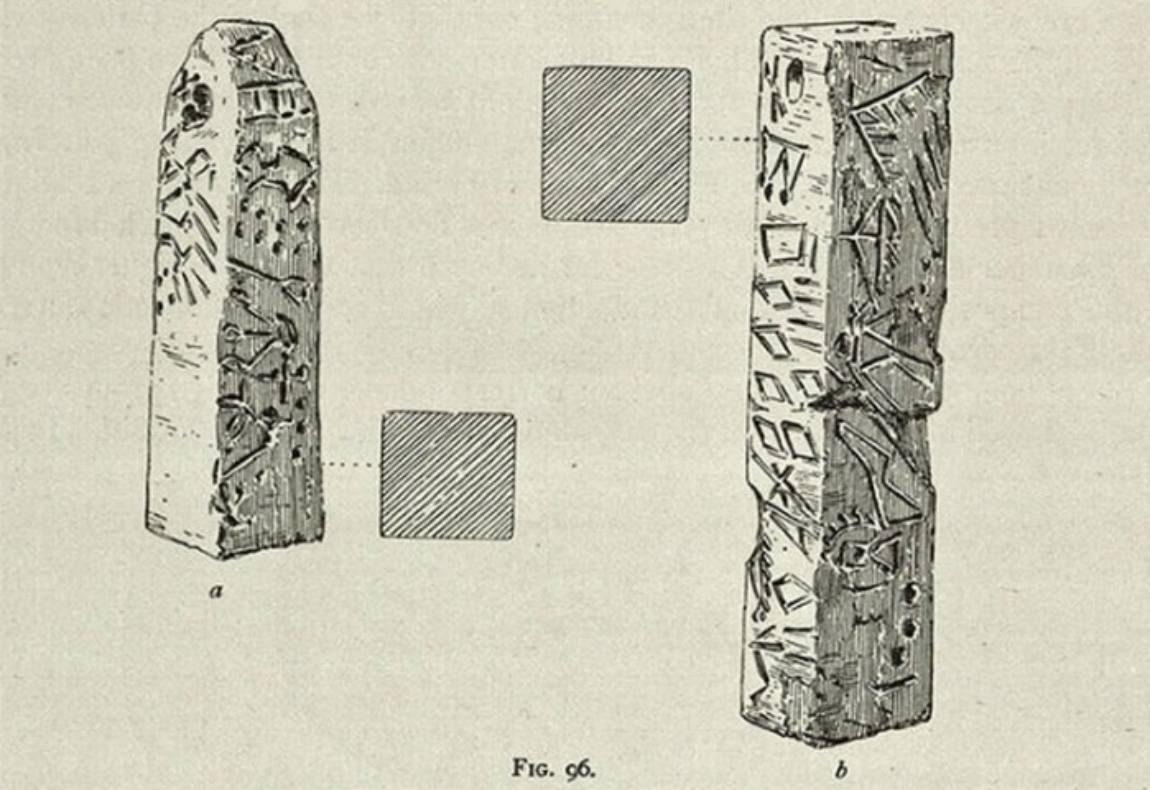
The fact that the Minoan Linear A script has not yet been deciphered is puzzling. After all, the characters and language of the seemingly related Linear B script have been deciphered. In addition, we are aware of the presence of a few characters who are mentioned in both versions.
By comparing the two scripts, we have been able to learn the names of a few Linear A words. When comparing Linear A and Linear B, there are certain strings that are the same, “usually geographical names or human names,” notes Ester Salgarella of the University of Cambridge. There is also evidence that the corresponding characters were pronounced identically or similarly. Some of the products on the Knossos clay tablets have also been transcribed phonetically.
However, as University of Melbourne linguist and archaeologist Brent Davis puts it, “We can speak the Linear A inscriptions, but what comes out sounds like total gibberish.” Davis has also shown that there are significant grammatical differences between Linear A and Linear B Greek, particularly with regard to sentence construction. In fact, the Minoans presumably used the same verb-subject-object sentence structure as the ancient Egyptians, rather than the subject-object-verb sequence seen in ancient Greek and Sumerian.
A further complication in deciphering Minoan Linear A is the paucity and linguistic inefficiency of Linear A findings. The majority of these lists are quite brief inventory takes that use just a few characters and have drastically shortened grammar. Narrative writings, diplomatic communications, monumental inscriptions, or personal letters have not been discovered. That makes any cryptographic deciphering of Linear A very difficult, if not impossible.
Davis writes, “Mathematicians tell us that we need 10,000 to 12,000 separate text samples to break Linear A using such approaches.” In contrast, just a little more than 7,000 Linear A inscriptions have been discovered so far. The researcher estimates that there are three to four complete A4 pages’ worth of information. Though the basic phrase structure is there, additional data is required to unlock the language.
We need the Rosetta Stone of the Minoans
The discovery of a Minoan “Rosetta Stone,” a larger inscription with the same text written in both Linear A and Linear B, would be even more exciting. This might be the key to unlocking the mystery of the Linear A script and understanding the Minoan language, much like the decipherment of Egyptian hieroglyphs.
Salgarella argues that “one should never say never,” since it is possible that such a priceless artifact may be discovered during archaeological excavation someday. Until then, we must use our ingenuity and new ways of thinking to assess the limited data. Salgarella and her crew are working on a digital encyclopedia of all the Linear A characters right now. Because of this, script analysis with the help of computers should be possible. They are holding out hope that this will be the breakthrough that allows them to decipher the Minoan language and writing system for good.


